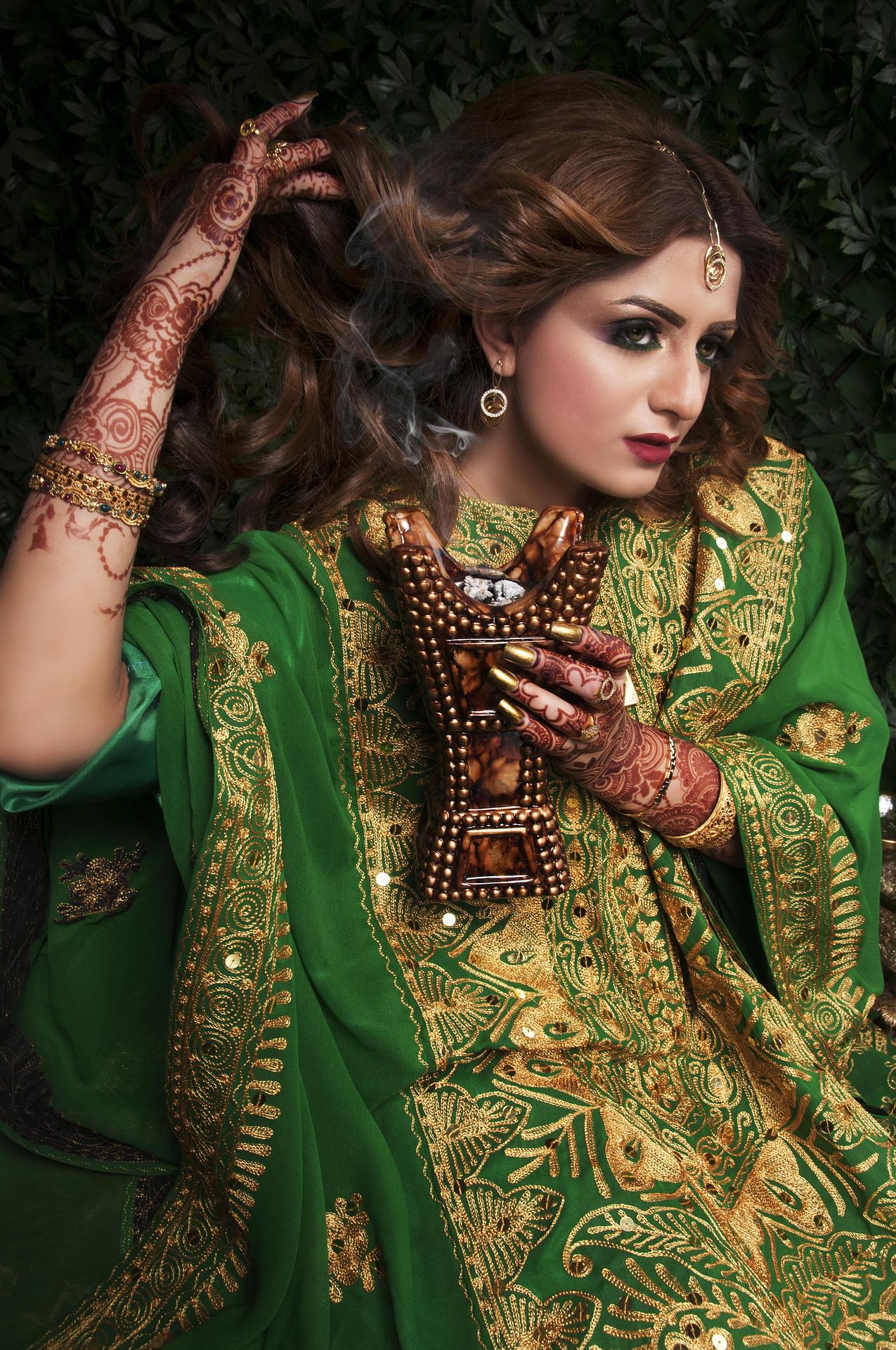Henna (Lawsonia inermis) is used for hair coloring and used in traditional Egyptian ceremonies. Henna is a natural permanent dye widely used throughout the world for henna coloring and has amazing benefits for hair. Henna is an all-natural plant dye that is often used in Morocco culture creation temporary tattoos Henna is an ancient medicinal plant that has been used as a natural dye for over 4000 years.
Henna is made from the leaves of the henna plant, Lawsonia inermis. Henna leaves are ground into a powder, and the powder is mixed with a variety of liquids in order to create a paste. Henna plants are trees, and they grow naturally in the northern parts of Africa and Australia, as well as in southern Asia.
Henna is primarily used in the Middle East and Asia to color nails, hair, or skin with a characteristic warm brown hue that comes from Lawson’s red-orange pigment. Henna contains hennotaninic acid, a dye that binds to collagen in skin cells and to keratin in nails and hair, leaving behind a red tint. Since henna is a natural alternative to traditional coloring, it is also used to color eyebrows, mustaches and beards.
Henna Chemicals Vary by Color
Black henna is made by mixing paraphenylenediamine (PPD) with the natural vegetable dye henna. This dye is mainly used to dye textiles, but because of its darker color, manufacturers use it to make henna tattoo cones and hair dyes. Another ingredient used to darken henna is often coal tar hair dyes that contain paraphenylenediamine (PPD), which can cause dangerous skin reactions in some people.
So-called “black henna” is a henna pattern on the skin that uses black hair dyes and chemicals containing paraphenylenediamine (PPD) and peroxide, which can be very harmful to the skin. The name “henna” is used in other skin and hair dyes such as black henna and neutral henna, neither of which is derived from the henna plant.
Why Henna Trees Are Beneficial for Pigmentations
The leaves of the henna tree contain a natural pigment that can be used in temporary body art, hair coloring, skin, nails and fabrics such as leather, wool and silk. The leaves are the source of the reddish-brown dye known as henna, often used in temporary body art and fabric dyeing. Only the henna leaves are suitable for dyeing hair, other parts of the henna plant are not suitable for dyeing other colors.
When these henna leaves are mixed with slightly acidic fruit juice, the Lawson molecule in the henna becomes available for staining. A pigment called lawson is what henna tattoos are made of: crushed leaves of the henna plant that are dried and ground to make paint. The product used for natural henna tattoos is a coloring paste made from the dried and crushed leaves of the henna plant mixed with water and a natural color fixer.
Also known as mehendi, the ancient tradition called henna refers to the tradition of painting the body with a paste made from the powdered dried leaves of the henna plant, also known as Lawsonia inermis. Henna, also known as mehendi in Urdu Hindi and also known as cinchona in Hebrew, is a dye made from the Lowsonia inermis plant, also known as cinchona, henna tree and Egyptian privet.
Henna contains the active compound “lawson”, a reddish-orange dye that binds to the keratin (protein) in our skin, coloring it into the keratin (protein) of our skin. The name henna also refers to a type of dye derived from the henna plant, and the art of using these dyes for temporary tattoos. It has been used for centuries to dye skin, hair and nails, as well as fabrics including silk, wool and leather.
Henna Has Utility Across Religions
Muslims also use henna as a dye for their hair and men’s beards, following the tradition of their prophet Muhammad, who dyed his beard with henna, their prophet Muhammad. Muslim women can also use henna to color their fingertips with some kind of natural nail polish. Many Muslims use henna to dye their hair as it is considered a good thing as recommended by the Prophet Muhammad. Another benefit of using henna based hair dye is that it helps stimulate hair growth and strengthen the scalp.
Henna is one of the oldest known pigments in the world, and henna is used to color hair, skin, fabrics, and many other things. If one uses the term Black Henna, also called ”Kali Mehndi” (in Hindi) or ”Pico”, the term Black Henna is a mixture of chemicals that are used to color hair. A chemical dye known as PPD, which is not FDA approved for use on skin, is often added to natural henna to produce a black color.
Natural henna is always dyed in the orange/red/brown range, but the exact shade may vary. Henna can vary in color from maroon to pale orange, depending on the quality of the leaves and the mixture used to make the henna paste.
The color resulting from henna dyeing depends on the original hair color, as well as the quality of the henna, and can vary from orange to chestnut and burgundy. While henna tends to give hair a copper color, indigo gives it a dark brown to black color. The color resulting from henna staining can vary from auburn, orange, maroon, chestnut brown to dark blue-black. Red-orange dye molecules called Lawsone color your hair a red-orange hue, ranging from light copper orange to reddish brown, depending on the base hair color, keratin structure, and paste mix.




